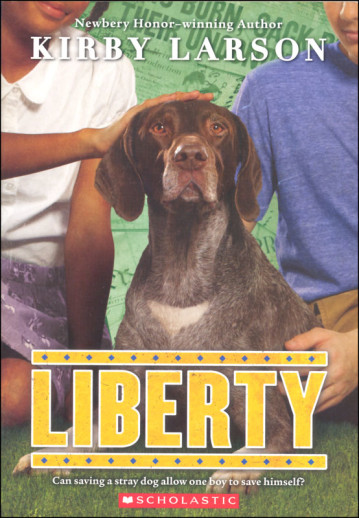We use cookies to make your experience better. To comply with the new e-Privacy directive, we need to ask for your consent to set the cookies. Learn more.
Liberty (Dogs of World War II)
This story centers on a trans-racial friendship and the rescue of a stray dog. The plot is also interwoven with the perspective of a German POW in Louisiana. Fish's father is serving overseas during WWII, and while he misses his dad, he also feels that his father is ashamed of him because of the Polio Fish has that causes him to walk with a severe limp. Uncomfortable in his own skin, Fish finds solace in his talent for creating inventions. He also finds distraction, albeit annoying at times, in the form of his extroverted neighbor, African-American Olympia. When Fish finds a stray dog called Liberty, he and Olympia band together to care for it. White Fish and black Olympia are an odd pair, and Olympia faces prejudice in segregated New Orleans. When Liberty's safety is threatened, a fateful meeting proves instrumental in rescuing their pup.
Fish has a knack for inventing. His annoying neighbor, Olympia, has a knack for messing things up. But when his latest invention leads Fish to Liberty, a beautiful stray dog who needs a home, he and Olympia work together to rescue her.
At the Higgins boatyard, where the boats that just might save the Allied forces during World War II are built, the wartime workforce is integrated and includes women and the disabled. However, a friendship that crosses racial lines is not the norm in 1940s New Orleans.
Fish, who suffered from polio and whose dad is away fighting in Europe, looks up to Mr. Higgins, and he's thrilled when one of his inventions helps Mr. Higgins's engineers unlock the mechanics of the landing crafts. Mr. Higgins inspires him to be bold and brave. As Fish enlists the help of unexpected friends and allies to save Liberty, he finds his perceptions of the world - of race and war, family and friendship - transformed.
Please see our Reading section for leveled reading series such as I Can Read, Step Into Reading, and many more.
Young readers will enjoy this historical fiction series, particularly if they are dog lovers. At the heart of each of these books is the special bond between a dog and a young person during the WWII era. The series examines life on the home front from a variety of situations and perspectives, from racism endured by Japanese-Americans to the specialized talents of Navajo Code Talkers. Readers will find many details about attitudes and events of the time, such as the growing of Victory Gardens and the purchasing of war stamp bonds. The dogs in each story help the protagonists cope with the many changes in their lives, such as having a family member sent off to war or being forced into an internment camp. Each book has a section at the end where the author discusses the real-life details of the situations in the story. Engaging books on their own, these would also make a nice supplement for those who are studying the WWII era in the U.S., especially for kids who love animals or are reluctant students of history. Books in the series are separate stories and are in no particular order.
| Product Format: | Paperback |
|---|---|
| Brand: | Scholastic |
| Author: | Kirby Larson |
| Grades: | 3-7 |
| ISBN: | 9780545840729 |
| Length in Inches: | 7.5625 |
| Width in Inches: | 5.25 |
| Height in Inches: | 0.5625 |
| Weight in Pounds: | 0.35 |

